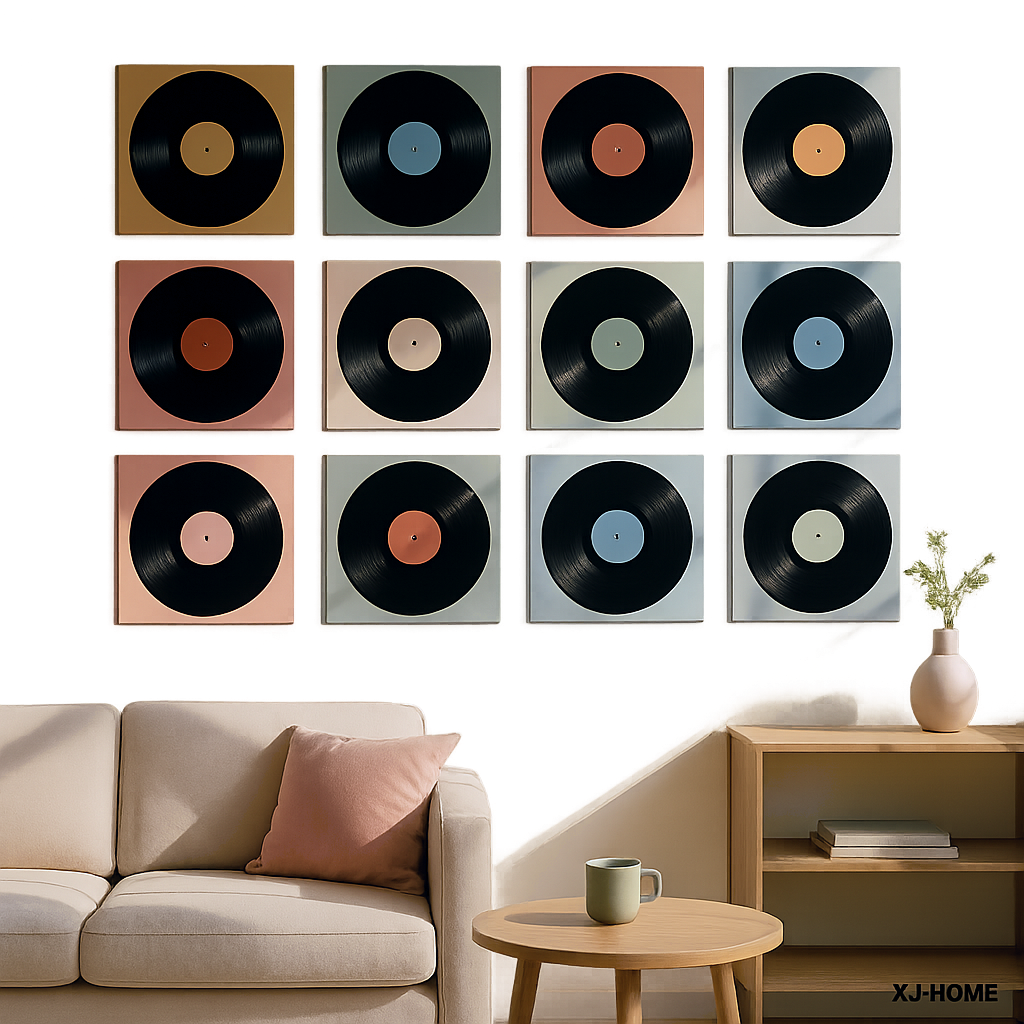In the intricate dance of stylus, vinyl, and amplifier, there stands a critical, often underestimated, component: the phono preamplifier, or phono stage. To the uninitiated, it might seem like just another box in the audio chain. But to those who chase the dragon of analog nirvana, the phono preamp is the crucial gatekeeper, the translator that deciphers the microscopic whispers etched into a record's grooves and transforms them into a signal your amplifier can understand and your ears can cherish. Choosing the right one isn't just about compatibility; it's about unlocking the full emotional and sonic potential of your cherished vinyl collection.
The signal coming directly from your turntable's cartridge is incredibly faint, typically mere millivolts (mV) for Moving Magnet (MM) cartridges and even lower, often microvolts (µV), for Moving Coil (MC) cartridges. It's also encoded with a specific equalization curve – the RIAA (Recording Industry Association of America) curve – which boosts bass and cuts treble during the record cutting process to save groove space and reduce noise. The phono preamp has two monumental tasks:
-
Amplify: It must boost that delicate signal by a significant amount, often by 40dB (a 100x voltage gain) for MM or 60dB (a 1000x voltage gain) or more for MC, all while adding as little noise and distortion as humanly possible.
-
Equalize: It must precisely reverse the RIAA curve, attenuating the bass and boosting the treble to restore the original tonal balance of the recording. Without this, your records would sound thin, tinny, and utterly unlistenable.
Given these critical functions, it's clear that skimping on the phono preamp or choosing one poorly matched to your cartridge is like putting bargain-basement tires on a performance sports car. You're simply not going to experience what your system is truly capable of.
The Twin Pillars: Gain and Loading – Getting Technical (But It's Worth It)
Understanding these two parameters is fundamental to making an informed choice. This is where we move beyond casual listening and into the realm of system optimization.
-
Gain (Amplification):
The preamp's gain needs to be appropriate for your cartridge's output voltage.
-
Moving Magnet (MM) Cartridges: Typically have higher output (usually 2mV to 5mV). They generally require around 35dB to 45dB of gain.
-
High-Output Moving Coil (HOMC) Cartridges: These are designed to work with MM phono inputs and also require similar gain levels (around 40dB to 45dB).
-
Low-Output Moving Coil (LOMC) Cartridges: These have very low output (often 0.1mV to 0.5mV) and need significantly more gain, typically 55dB to 70dB or even higher.
Why it's critical: Too little gain, and the signal will be weak, requiring you to crank your main amplifier's volume, which can raise the noise floor and make the music sound lifeless. Too much gain can overload the preamp or your main amplifier's input stage, leading to distortion and a compressed, harsh sound. The goal is a robust signal with minimal noise.
-
-
Loading (Impedance and Capacitance):
This is where things get truly nuanced and where many vinyl setups fall short of their potential. Loading refers to the electrical resistance (impedance) and capacitance that the cartridge "sees" at the phono preamp's input.
-
For Moving Magnet (MM) Cartridges:
-
Impedance: The standard input impedance for MM cartridges is almost universally 47,000 Ohms (47kΩ). Most MM phono stages are fixed at this value.
-
Capacitance: This is the big one for MM cartridges and the most frequently overlooked. MM cartridges are sensitive to the total capacitance in the signal path. This total capacitance is a sum of the capacitance in your tonearm cables, your interconnect cables (from turntable to preamp), and the input capacitance of the phono preamp itself. Cartridge manufacturers specify an optimal capacitance range (e.g., 100pF to 300pF - picofarads).
-
Too little capacitance can lead to a bright, thin, or edgy sound.
-
Too much capacitance can cause a rolled-off high end, making the music sound dull, closed-in, or muddy.
Getting the capacitance right is key to achieving a flat, extended frequency response from your MM cartridge. Some phono preamps offer adjustable capacitance settings, which is a highly desirable feature for fine-tuning.
-
-
-
For Moving Coil (MC) Cartridges:
-
Impedance: MC cartridges are much less sensitive to capacitance but highly sensitive to resistive loading. Unlike the 47kΩ standard for MM, the optimal impedance for MC cartridges can vary widely, from as low as 10 Ohms to over 1,000 Ohms (1kΩ). The cartridge manufacturer will usually recommend a range or a minimum value. A common rule of thumb is to start with an impedance setting around 10 times the cartridge's internal impedance (e.g., for a cartridge with 10 Ohms internal impedance, try loading around 100 Ohms). However, this is just a starting point. Adjusting the impedance loading can significantly affect the sound:
-
Lower impedance values (e.g., 50-200 Ohms for many LOMCs) tend to provide more damping, resulting in tighter bass, better control, and sometimes a smoother top end.
-
Higher impedance values can open up the sound, offering more air and detail, but if too high, can lead to brightness or ringing.
The ability to adjust impedance loading is a hallmark of a versatile MC phono stage and allows you to tailor the sound to your specific cartridge and taste. Experimentation here is often rewarded.
-
-
Capacitance: While less critical than for MMs, some MC phono stages still offer capacitance adjustments. It’s generally less of a concern, but worth noting if options are available.
-
-
For an excellent technical breakdown of RIAA equalization and phono preamp principles, the Wikipedia page on Phono Inputs is a solid resource.
Key Features to Look For: Beyond the Basics
-
MM/MC Switchability: If you ever plan to experiment with both cartridge types, a preamp that can handle both is invaluable.
-
Adjustable Settings: As discussed, adjustable gain, capacitance (for MM), and impedance (for MC) offer the flexibility to perfectly match a wide range of cartridges. These adjustments might be via DIP switches, dials, or jumpers.
-
Build Quality & Power Supply: A phono preamp is amplifying a tiny signal, so it's incredibly susceptible to noise.
-
Look for good shielding, quality internal components, and robust construction.
-
A clean, well-regulated power supply is paramount. External power supplies are often preferred as they move the potentially noisy transformer away from the sensitive amplification circuits.
-
-
Subsonic (Rumble) Filter: This filter rolls off very low frequencies (typically below 20Hz) to reduce the effects of record warps, footfalls, or turntable rumble. It can be useful, especially with ported speakers, but some audiophiles prefer to avoid any extra circuitry in the signal path if rumble isn't an issue.
-
Mono Switch: If you listen to a lot of mono records, a dedicated mono switch can sum the channels, which can reduce surface noise and provide a more stable central image.
-
Balanced (XLR) Outputs: Found on higher-end units, balanced connections can offer superior noise rejection, especially over longer cable runs to your main amplifier. This requires your main amp to have balanced inputs.
Types of Phono Preamps: Finding Your Fit
-
Built-in Phono Stages: Many integrated amplifiers and receivers include a built-in phono input.
-
Pros: Convenient, no extra box or cables, cost-effective.
-
Cons: Often an afterthought, with basic circuitry, limited (or no) adjustability, and potentially more susceptible to noise from within the amplifier's chassis. They are usually MM-only, or if they offer MC, it's often a very basic implementation.
-
The Verdict: For casual listening or budget setups, a decent built-in stage can be perfectly adequate. But for serious vinyl enthusiasts, an outboard unit is almost always a significant upgrade.
-
-
Outboard (External) Phono Preamps: Dedicated units designed for one purpose.
-
Pros: Generally offer superior sound quality due to dedicated design, better components, more sophisticated power supplies, greater adjustability, and isolation from other electronics. They provide an excellent upgrade path.
-
Cons: Another box, more cables, and an added expense.
-
The Verdict: This is where the real magic happens for most vinyl lovers. The performance jump from a typical built-in stage to even a modest outboard unit can be revelatory.
-
-
Tube vs. Solid-State:
-
Tube (Valve) Preamps: Often associated with "warmth," "lushness," a rich midrange, and a sense of three-dimensionality. Can be very engaging but may require periodic tube replacement.
-
Solid-State (Transistor) Preamps: Typically characterized by detail, neutrality, speed, and tighter bass control.
-
The Reality Check: These are broad generalizations. The specific design and quality of components are far more important than the underlying technology. There are "tubey" sounding solid-state units and very neutral, detailed tube units. Don't get too hung up on the topology; focus on performance and synergy.
-
The Synergy Factor: It's All About the Match
A phono preamp doesn't exist in a vacuum. Its performance is intimately tied to the cartridge it's paired with and the rest of your audio system. What sounds fantastic in one system might not be the best fit for another.
-
System Matching: Consider the overall sonic character of your amplifier and speakers. If your system is already on the warm side, a very lush tube phono stage might be too much of a good thing. Conversely, a very analytical system might benefit from a preamp that adds a touch of warmth or body.
-
Trust Your Ears: If possible, audition phono preamps in your own system. If not, rely on reputable reviews from sources that align with your listening preferences and describe the sonic characteristics in detail. Online forums can be a source of user experiences, but be wary of hype and individual biases.
-
Budget Wisely: You can find excellent phono preamps at various price points. While high-end units can offer sublime performance, there's fantastic value to be had in the entry-level to mid-range. Allocate a reasonable portion of your analog budget to this critical component. Often, upgrading a phono preamp can yield a more significant sonic improvement than a comparable investment in other areas.
The XJ-HOME Philosophy: Elevating the Analog Experience
At XJ-HOME, we believe that the pursuit of exceptional audio is a journey of understanding and optimizing every link in the chain. The phono preamp, though often hidden from view, is a cornerstone of a high-fidelity vinyl setup. Its ability to accurately amplify and equalize the delicate signal from your cartridge is fundamental to experiencing the depth, nuance, and emotional impact that vinyl is capable of delivering. We encourage enthusiasts to delve into the "why" and "how" of their equipment, a philosophy you'll find reflected in the resources and curated selections on our website, https://xenonjade.com. A well-chosen phono preamp isn't just an accessory; it's an investment in a more profound connection to your music.
The Final Word: Amplify Your Enjoyment
Selecting the right phono preamp is a deeply rewarding step in building a truly captivating vinyl playback system. By understanding the importance of gain, loading, and key features, and by considering the synergy with your existing components and listening preferences, you can choose a unit that will not just play your records, but bring them to life. Don't underestimate this vital component – the gatekeeper of your groove awaits, ready to unlock a new level of analog pleasure.





Leave a comment
All comments are moderated before being published.
This site is protected by hCaptcha and the hCaptcha Privacy Policy and Terms of Service apply.